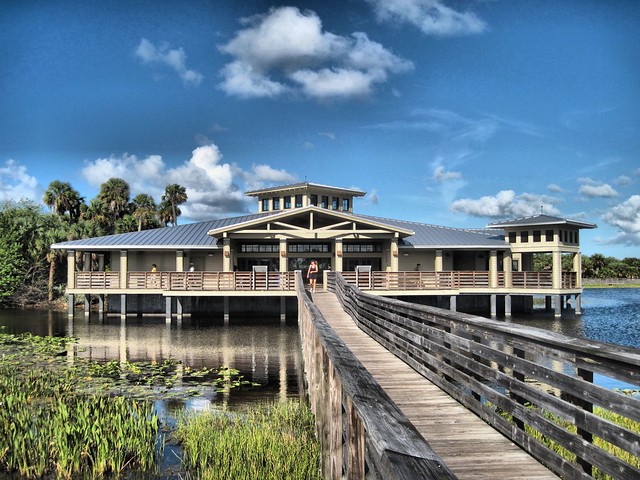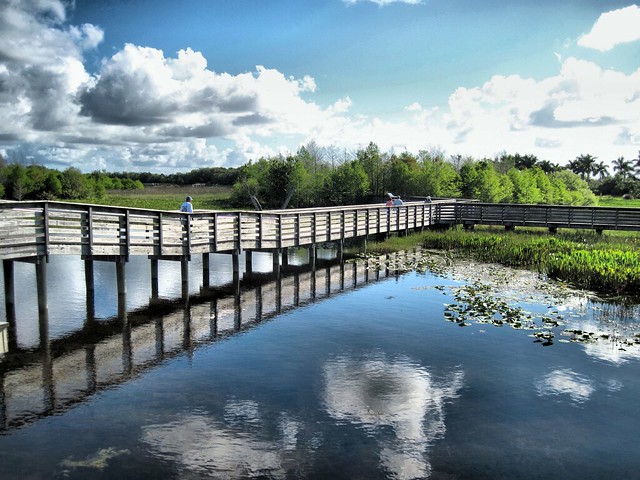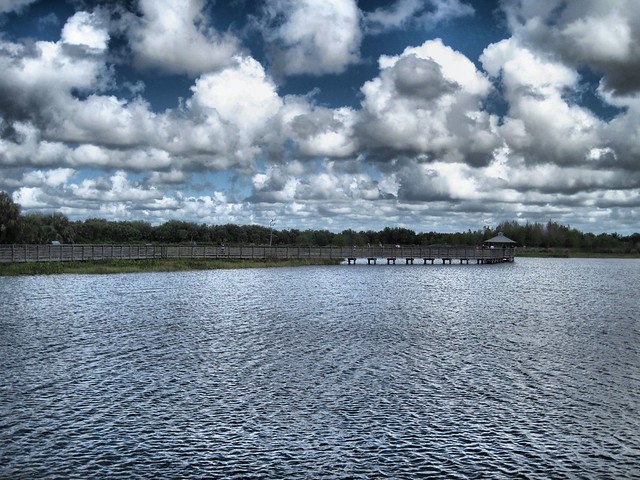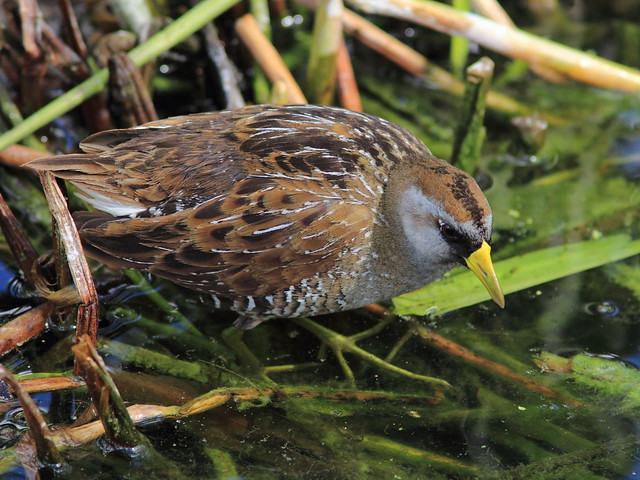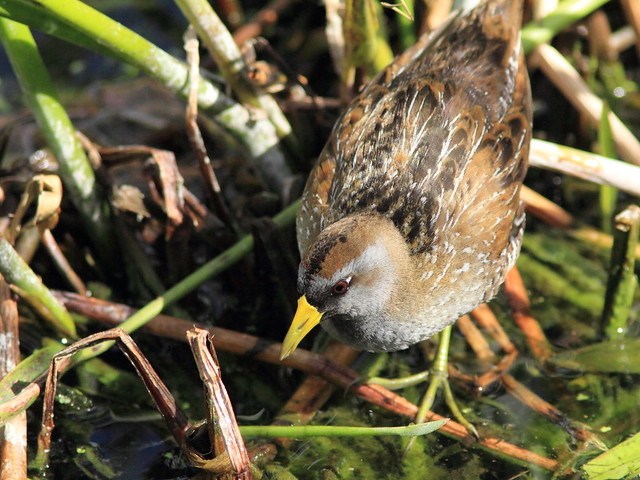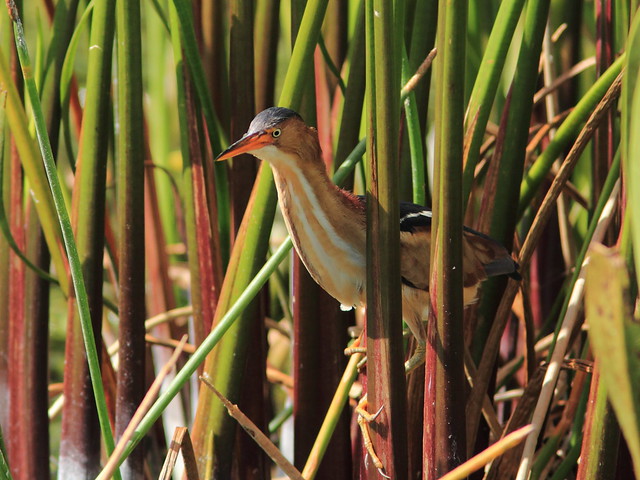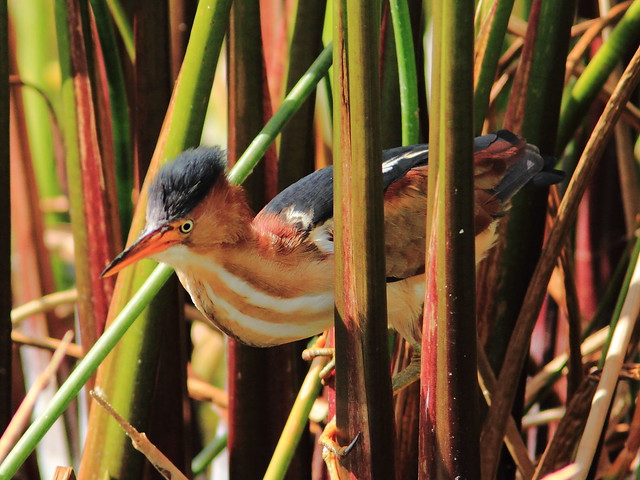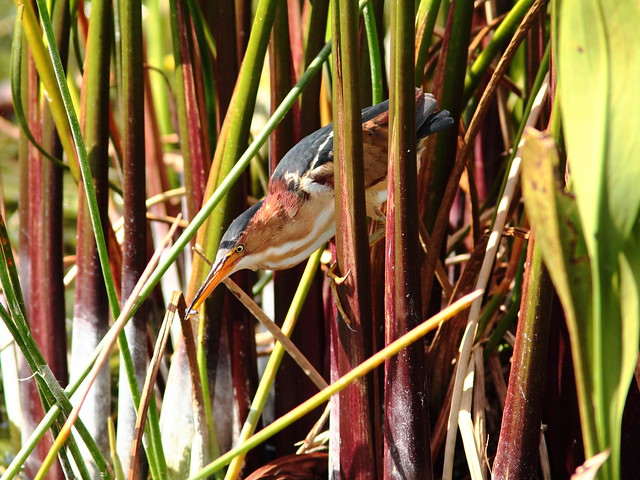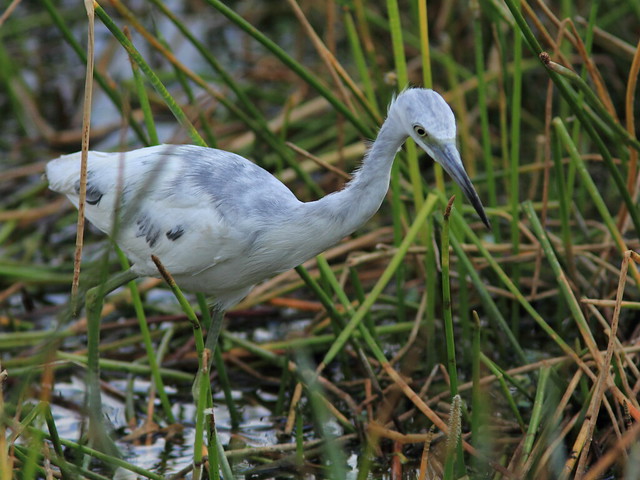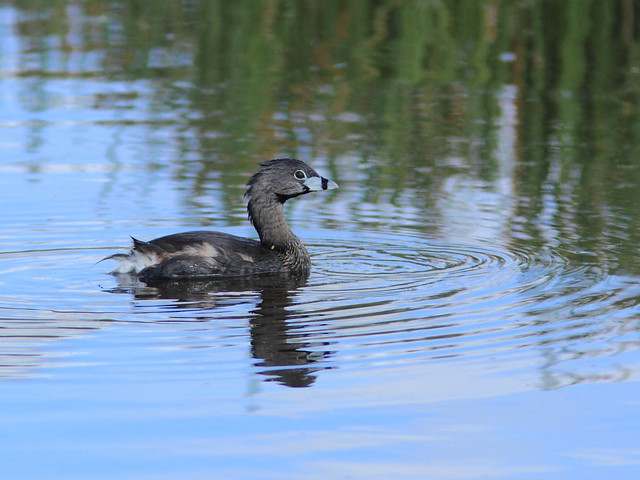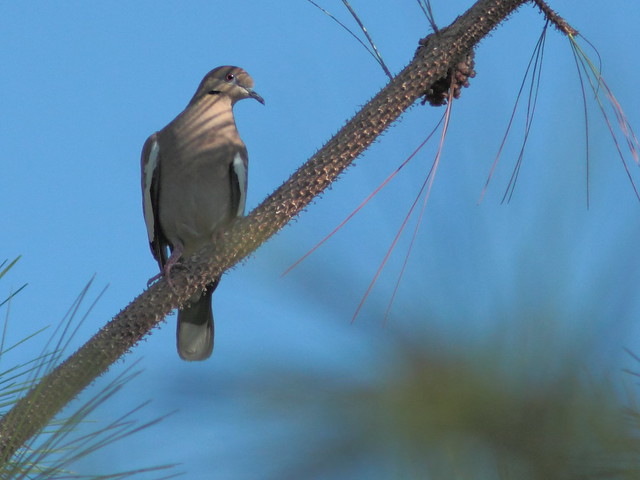Posted by: Ken @ 12:12 pm
Any birder visiting South Florida just can’t miss stopping at three special places in western Palm Beach County: Loxahatchee National Wildlife Refuge, Wakodahatchee Wetlands, and Green Cay Nature Center. The latter, in Boynton Beach, was our objective as we traveled up to have lunch with one of my “old” classmates. When I say old, I mean it in the classic sense, as we started kindergarten together and were in the same grades all the way through grammar school and graduated together from the same high school. Our meeting place for lunch was a little over an hour’s drive from our home, and Green Cay was a convenient place to stop on the way.
This is the 9,000 square foot Nature Center.
Purists might argue that Green Cay is a rather artificial place. Indeed, it is quite a new habitat, a domestic waste water treatment plant that opened to the public only seven years ago. But what a place it is! Green Cay’s 175 acres include 100 acres of wetlands with a mile and a half of boardwalks that traverse open lakes, ponds and sloughs, varied marsh habitats, cypress stands, and several dry islands.
This is one of the cypress-covered islands.
Unlike so many “sewage ponds” that attract birders, there are no bad odors at Green Cay. The crystal-clear water that enters has been well treated to remove nearly all the suspended and dissolved biological substances, and Green Cay is the final stage of treatment. Yet it is fertile enough to support a rich growth of plant life that purify and filter the water. When it flows out of Green Cay, so-called tertiary effluent, the water can safely be used for agriculture or be discharged into waterways.
The boardwalk runs along the edge of a large lake.
Green Cay is a big hit with local residents and casual visitors as well, and it’s best to get there early if you want to find a convenient place in the huge parking lot. Overheard, a grandmother talking to her little grandson and granddaughter: “Are you happy I brought you here?” The little girl replied: “Grandma, I really like this place.” The boy cried out gleefully: “I love it!”
A Great Blue Heron tends its chick right next to the boardwalk.
A Great Egret catches some salad to go with the fish.
One interesting thing about the place is that the wildlife have become accustomed to having all the people around. Herons, Limpkins and rails forage along the boardwalk, seemingly unconcerned. What a difference from the wetlands near our home, where the only visitors besides a few birders and joggers are kids on ATVs. We are lucky to get a fleeting glance at a bittern or a raptor… or a Bobcat.
Our target species for this visit were the Sora and the Least Bittern, both of which had recently been reported at Green Cay. We were not disappointed.
The Sora was most cooperative.
We especially hoped to see one or more of the family of Bobcats that have been thrilling photographers with close-up views. When we arrived there at about 9:30 in the morning, we met a friend who had a drop dead photo of an adult Bobcat that had strolled out into the open almost in front of the Visitor’s Center. He had taken it less than an hour previously. There were no other reports of Bobcat sightings while we were there.
I was so thrilled to see a Least Bittern that I took far too many photos. These are a few samples. I’ve never before had such good luck in getting one to come out of hiding.
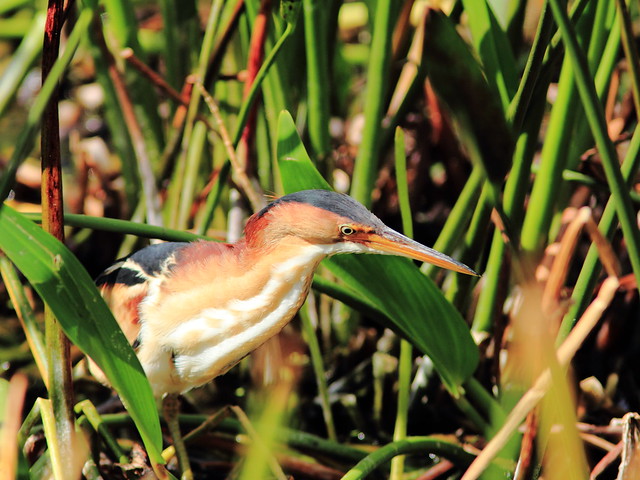
Who can pass up a photo-op with a Purple Gallinule…
…or a Glossy Ibis in breeding plumage?
This immature Little Blue Heron is changing into adult garb.
The Blue-winged Teal were fighting over mates, but these two males are getting along peacefully.
Pied-billed Grebes take advantage of the richness of prey in the waters.
Purple Martins are busy bringing nesting material into their apartments.
A White-winged Dove looks down from a pine tree.
American Coots are plentiful, but hey, they’re birds too!













